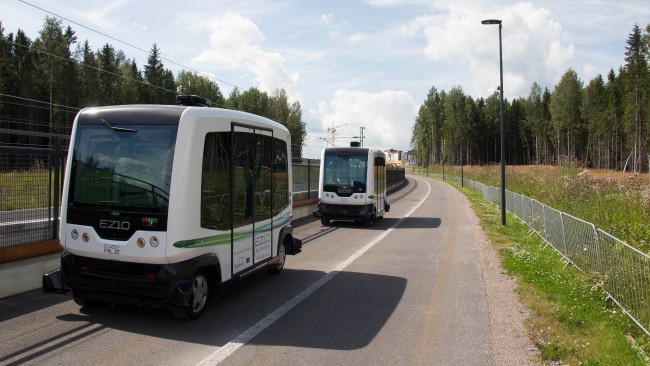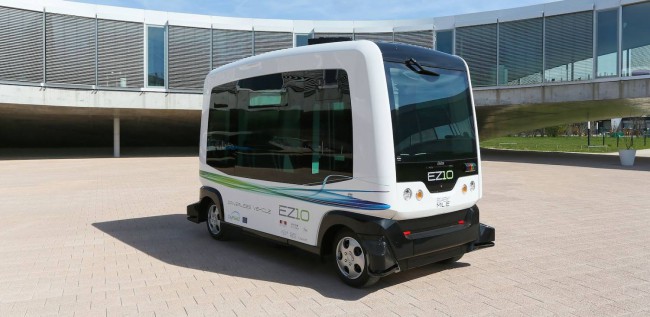
Driverless buses WEpods in the Netherlands will start carrying passengers in may 2016. The subject of road transport, which does not need drivers, as relevant as ever — working on it and automakers, and technology companies. In this context a very interesting little experiment, which will be held in the cities of Wageningen and Ede Dutch province of Gelderland. Not requiring the drivers of the buses will carry passengers at a local University. Self-propelled vehicles is still far from becoming a mass, but Ford has already patented the cinema for not needing drivers.

Learn more about this interesting project discussed in the article “Driverless Bus System Showcases Future of Public Transit” Patrick Sisson (Patrick Sisson), published resource curbed.com.
Buses can seat six passengers and remind closed and larger buggies. Unlike such self-propelled transport systems, which are used now, the new electric vehicles will not ride exclusively on a specially designed track just for him, instead following the same route that the vehicle, operated by drivers people.
The project Manager Alwin Becker (Alwin Bakker) said:
It’s hard to believe that the robot is able to drive you from one place to another.
After two months of testing on a 200-metre stretch of public roads, new transport system WEpods of two self-propelled buses in may, will begin carrying passengers. Further in a note it is reported that she was designed, tested and approved in less than two years and cost the local government at 3.4 million euros (~3.8 million USD).
According to Bakker, this technology is an open project, meaning that other companies and municipalities will be able to use it. It is also noted that the Rotterdam, Amsterdam and Brussels have already expressed interest in it.
The project began with the request of a consortium of officials of the province, schools and technology firms Google. Becker reports that the company asked to use its technology to local transport. The answer was: “no.”
So there was the idea that such a system can be developed on their own. Then the project received funding from the province, and together with Delft technical University was made the modification of vehicles, initially established by the robot manufacturer EasyMile, which were supplemented by the radar system and the control unit.
Developers have faced the same challenges as other makers of self-propelled transport: how to take into account pedestrian traffic, respond to traffic signals and to understand how to interpret the swaying trees and to respond to them. The result is a consistent control device.
When WEpods will begin to carry passengers in Wageningen University, the new buses for guests using a special app for the iPhone, call from train station Ede. Self-propelled bus will take you to the University campus at a speed of 25 kilometers per hour.
Although currently a new transport system is able to drive only by a small predetermined route, its features already foreshadow how the future of self-propelled transportation to improve the transportation of passengers and to make it more effective.
Baecker in addition to the previously mentioned:
We had designed the robot, and he is able to drive trucks on the public road.
Transport technology is constantly improving. Earlier world speed record was set by a bus on fuel from manure. Electric buses are not always so tiny — company BYD was the biggest electroavtomat. Moreover, now there is the possibility of wireless charging electric buses.
As far as a significant step forward in the field of transport, needs no drivers, was this development?
